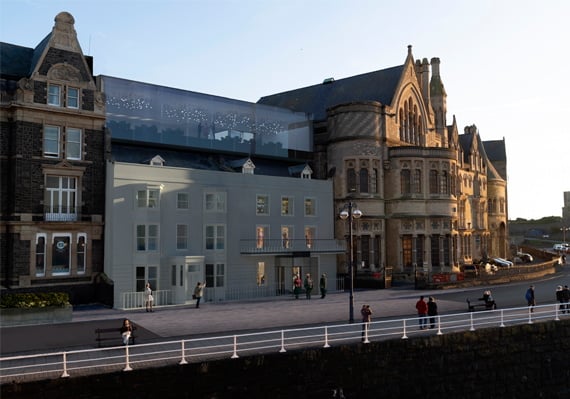“INEVITABLY some compromises are required to ensure that historic buildings are preserved for future generations,” planners have said as Listed Building Consent was granted for an ambitious £36 million redevelopment of Aberystwyth University’s Old College.
The redeveloped Old College is expected to be complete in the summer of 2024 - two years after it was originally slated to be open.
Aberystwyth University originally wanted the revamped building - which will include a hotel as well as educational and community spaces - finished by this year in time to mark the institution’s 150th anniversary but delays including the pandemic moved the project back.
The plan for the Grade I listed Old College will see it transformed into a cultural, learning, and enterprise facility for the university and includes a 33-bed, four-star hotel as well as space for events.
The scheme was approved unanimously in 2019 by Ceredigion County Council, whose planning officers gave Listed Building Consent for the project the green light under delegated powers last month after minor amendments were made to the finalised plans.
Work on the site can now begin in earnest at the site.
The most controversial aspect of the scheme is a new glazed conference space that cantilevers over the Grade II listed Georgian Villas at 1 and 2 New Promenade.
That development attracted several objections as being “not in keeping” with the building.
The scheme also proposes significant repair and restoration works, along with providing increased accessibility for disabled people.
It will incorporate an exhibition centre, place of learning, a hub for business start-ups, boutique hotel and conference facilities.
Planners said the scheme will provide new facilities to the community and will “create an economic benefit” to Aberystwyth and the wider area.
While planners, in a report, said the construction of the new building “will inevitably have some impact on the listed buildings”, it is “difficult to find new uses for large historic buildings such as the Old College that are viable in the long term.”
“Inevitably some compromises are required to ensure that they are preserved for future generations,” planners said.
“In addition to this, it is important to provide improved accessibility for disabled people and this can also be difficult to achieve without impacting on a building’s historic fabric.
“Conservation is about the management of change, and it is not always possible or appropriate to prevent change, instead being necessary to achieve a balance between preserving the historic environment and finding new uses for historic buildings.
“The proposed scheme requires all the elements included in order to be viable and to provide a long-term new use for the buildings, and incorporates significant repairs and restoration of the listed buildings as part of the proposals.”





Comments
This article has no comments yet. Be the first to leave a comment.